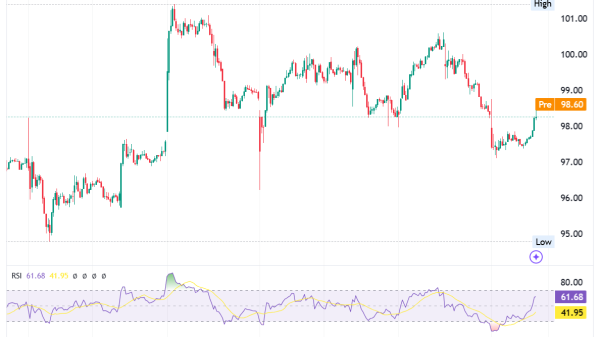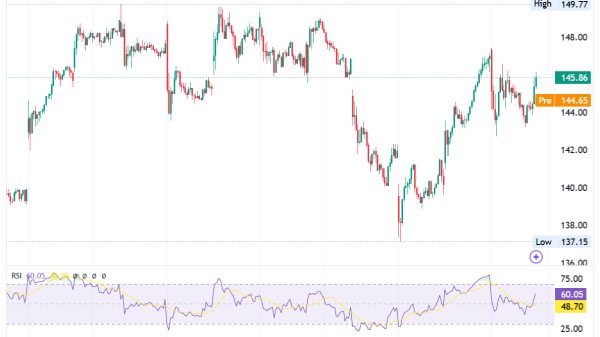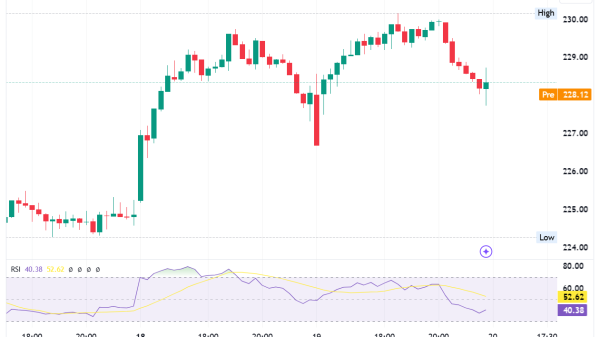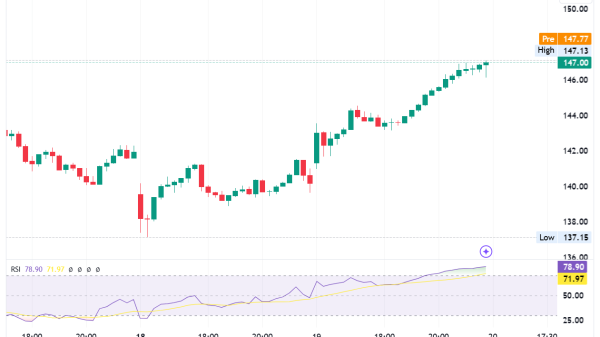
Investing.com — The prospect of a “lost decade” for U.S. stock markets, as outlined in recent analyses by both Goldman Sachs and Yardeni Research, suggests that investors may be facing much lower returns over the next ten years than seen in recent history.
Goldman Sachs recently projected an average annual return of 3% for the S&P 500 over the next decade, potentially dipping to as low as -1% in less favorable conditions, and only reaching 7% in more optimistic scenarios.
This outlook has spurred discussions among investors and analysts alike about whether the market is heading for a prolonged period of stagnation.
Goldman’s reasoning focuses on the high valuations currently characterizing the stock market, with the S&P 500’s forward price-to-sales ratio reaching a historical high of 2.9 and a forward price-to-earnings ratio at 22.0.
These elevated valuations imply that the market is starting from a particularly high point, which has historically been associated with lower returns in subsequent years.
As a result, for the S&P 500 to achieve only a 3% annualized return, significant downward adjustments in valuations may need to occur.
Further, the average annual earnings-per-share (EPS) growth, which has historically hovered around 6.5%, would also need to slow to about 6.0% to fit Goldman’s projections.
In contrast, Yardeni Research offers a more optimistic view, arguing that the likelihood of a lost decade may be overstated.
Yardeni’s position centers on the view that the U.S. economy is seeing a “Roaring 2020s” productivity boom, with real GDP growth currently at 3% and inflation moderated to around 2%.
This productivity-driven growth could provide companies with the conditions needed to sustain or even exceed historical growth rates, translating into healthier profit margins and solid returns for shareholders.
Yardeni also points to the compounding effect of reinvested dividends, which Goldman’s projections did not fully account for, as a factor that could significantly boost total returns.
Yardeni Research also highlights several counterpoints to the lower-return thesis, specifically emphasizing that the stock market’s structural shifts toward technology have strengthened the fundamentals of the leading sectors.
Today, technology and communication services make up about 40% of the S&P 500, similar to the tech-heavy peak before the dot-com crash.
However, Yardeni argues that today’s companies are fundamentally more sound, given their substantial contribution to productivity and earnings across the market, contrasting with the speculative valuations that characterized the tech bubble of the early 2000s.
This technology-driven productivity is also seen as an effective hedge against inflation, as companies have the pricing power to mitigate rising costs—a point Yardeni underscores as another missing aspect of Goldman’s assessment.
On the issue of inflation, Yardeni asserts that stocks remain the most reliable hedge against inflationary pressures, unlike bonds, which could be penalized by rate hikes aimed at curbing inflation.
As businesses with more pricing power are better positioned to adjust to inflationary environments, Yardeni suggests that this strength could mitigate the potential for negative returns, which Goldman warns might occur in a worst-case scenario.
The debate ultimately boils down to differing expectations around productivity, valuation adjustments, and inflation resilience.
While Goldman Sachs presents a cautious outlook based on high starting valuations and the historical trends that typically follow them, Yardeni Research is more bullish, emphasizing the productivity potential of technology integration and the supportive macroeconomic conditions of the current environment.
Yardeni sees the continuation of strong earnings growth, particularly if the tech-driven productivity boom persists, as a factor that could offset high valuations and result in returns closer to historical averages, with the potential for even higher returns if dividends are reinvested.


























